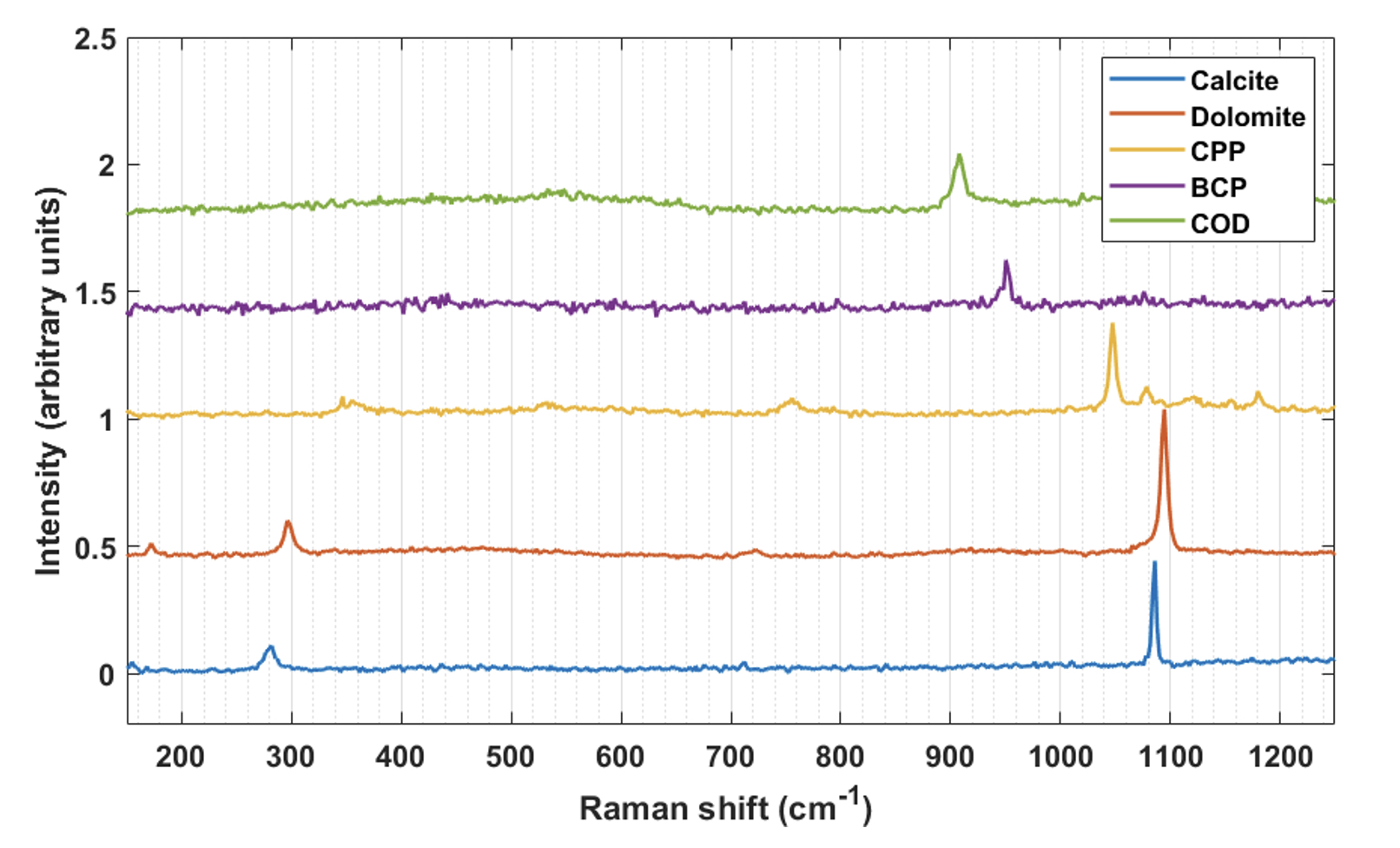Session Information
Session Type: Poster Session A
Session Time: 9:00AM-11:00AM
Background/Purpose: Calcium containing crystals in osteoarthritis (OA) are of interest as they potentially stimulate the NRLP-3 inflammasome and may become treatable with novel therapeutics. Previous studies demonstrated a presence of calcium pyrophosphate (CPP) and basic calcium phosphate (BCP) crystals in early and advanced OA [1]. Calcium carbonate crystals have been found in cartilage specimens of advanced OA and have recently been shown to potentially occur early in development of cartilage calcification [2].
Methods: Synovial fluid samples from advanced knee OA cases were collected pre-operatively from the Maastricht University Medical Center (MUMC+). The population includes both males and females and all patients were above 18 years of age. Patients gave written informed consent before collection of their synovial fluid. Samples were analyzed with an integrated Raman polarized light microscope. Samples were considered positive for a certain type of crystal if at least one crystal with a distinctive spectrum could be identified.
Results: Calcium containing crystals were present in all (100%) of the 36 samples. 34 (94.4%) of the samples contained calcite (calcium carbonate) crystals. Dolomite (calcium magnesium carbonate) crystals were present in 10 (27.8%) samples, 9 (25.0%) samples contained both types of calcium carbonate crystals. CPP crystals were present in 33.3% of samples. Basic calcium phosphate crystals were present in 9 (25.0%) samples, all of which were hydroxyapatite. Calcium oxalate crystals were present in 7 (19.4%) samples, 3 of which were identified as calcium oxalate dihydrate (COD) and 4 of which were identified as calcium oxalate monohydrate. Most of the samples (80.6%) contained more than one type of calcium crystal, but CPP and BCP were never identified simultaneously in one sample. Raman spectra of identified particles are shown in figure 1.
Conclusion: Calcium containing crystals are common in synovial fluid samples from knee joints in patients with end-stage osteoarthritis. Raman spectroscopy is a novel technique for rheumatology which enables reliable detection and objective identification of crystals such as calcium carbonate. The observation of calcium carbonate (calcite) crystals in synovial fluids of OA patients is novel and a promising subject of further study. Pathways to presentation in synovial fluid and inflammatory properties should be investigated.
References:
1. Rosenthal, A.K., Crystals, inflammation, and osteoarthritis. Curr Opin Rheumatol, 2011. 23(2): p. 170-3.
2. Casal-Beiroa, P., V. Balboa-Barreiro, N. Oreiro, et al., Optical Biomarkers for the Diagnosis of Osteoarthritis through Raman Spectroscopy: Radiological and Biochemical Validation Using Ex Vivo Human Cartilage Samples. Diagnostics (Basel), 2021. 11(3).
To cite this abstract in AMA style:
Niessink T, Welting T, Janssen M, Otto C, Jansen T. Identification of Calcium Crystals in End-Stage Osteoarthritis with Raman Spectroscopy [abstract]. Arthritis Rheumatol. 2023; 75 (suppl 9). https://acrabstracts.org/abstract/identification-of-calcium-crystals-in-end-stage-osteoarthritis-with-raman-spectroscopy/. Accessed .« Back to ACR Convergence 2023
ACR Meeting Abstracts - https://acrabstracts.org/abstract/identification-of-calcium-crystals-in-end-stage-osteoarthritis-with-raman-spectroscopy/

